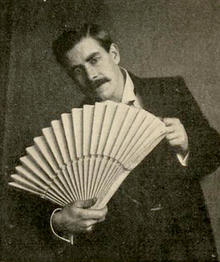
The Great London Mystery is a 1920 British silent crime film serial directed by Charles Raymond and starring David Devant, Robert Clifton and Charles Raymond. [1] [2] The serial, in 12 chapters, showcased the acting abilities of Devant, one of the most famous magicians of his time, allowing him to present his routine on film. After years of doing sleight of hand stage shows, Devant later turned to acting and film distribution. [3] The film was written by Raymond and Hope Loring.
Contents
It is considered a lost film.[ citation needed ]